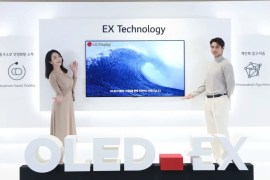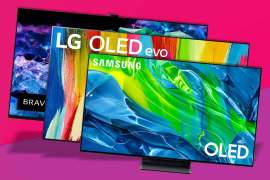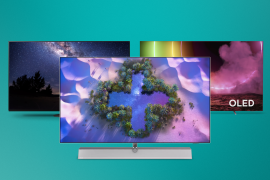Every Panasonic 2017 4K TV detailed
Five models, one choice - here’s all you need to know
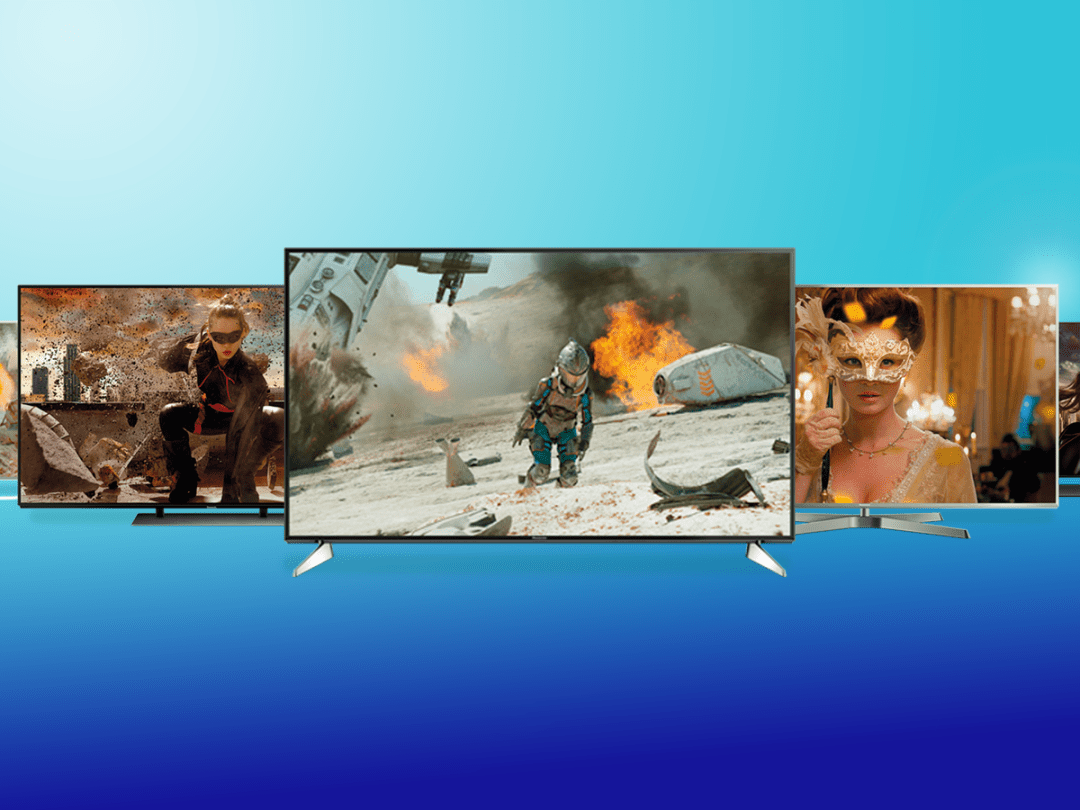
Haven’t got yourself a 4K telly yet? You’re missing out.
Besides the higher resolution compared to Full HD – there are roughly four times as many pixels – most 4K boxes also tend to come bundled with lots of lovely tech to make your viewing experience better: think HDR, faster processing rates and superb saturation.
And the 4K competition is seriously hotting up, with the likes of LG’s new OLEDs and Samsung’s QLED sets delivering pictures to stop you in your tracks.
Panasonic, though, isn’t one to be left behind. In fact, the Japanese manufacturer has announced five – yes, five – new 4K models for 2017, each in a variety of sizes.
What makes each special? And which is the perfect one for your lounge? Worry not: we’ve hauled together all the important bits of info below. OLED or LED, all you have to do is scroll.
EZ1002
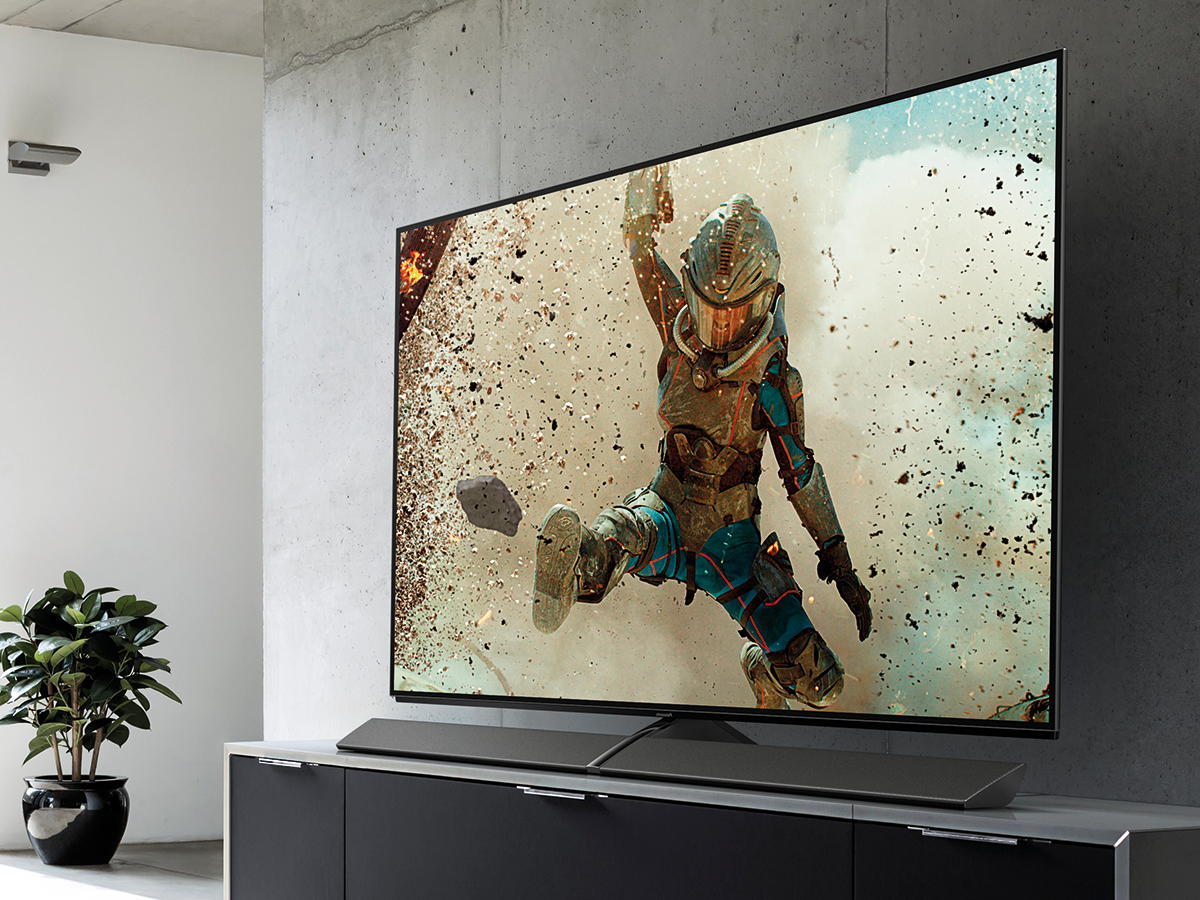
Leading from the front is Panasonic’s OLED whopper, the EZ1002. While it might look very much like a normal TV – albeit one with a nifty soundbar beneath – its specs offer plenty to get excited about.
‘Pro’ is the word of the hour when it comes to the EZ1002, with Panasonic keen to emphasise its raft of high-end features – not least the HCX2 colour-processing engine, which is pencilled to deliver extreme colour accuracy. So much so, that it can handle 3D lookup tables – something usually reserved for pro-level kit.
The panel itself has also been upgraded, with the new HDR-enabled OLED unit offering far higher (as much as double) brightness than previous models – 1000 nits, to be precise. In person, this gives the EZ1002 the perfect combination of OLED contrast levels and LED-rivalling brightness.
A new black filter – bespoke to the EZ1002 – helps, too, eliminating hues and increasing contrast to deliver absolute black levels, while that processor ensures fine colour details and handling. Admittedly, even a close watcher probably wouldn’t notice the difference between it and a competitor unless it was pointed out, but it’s there and it works.
As for sound, a 14-speaker soundbar tuned by Technics, Panasonic’s audio arm, lives beneath the EZ1002 and acts as its stand, making for an attractive package, in both looks and sound – although the telly can’t stand up without the ‘bar, which is worth considering if you have home audio kit of your own.
A new 4K gaming mode can be enabled to drastically reduce input lag, while the EZ1002 also benefits from Panasonic’s new My Home Screen 2.0, with support for 4K content from Amazon, Netflix and YouTube.
Oh, and the box plays nice with both HDR10 and HLG (Hybrid Log Gamma), too. But, unlike LG’s entire OLED range and Sony’s A1, the EZ1002 doesn’t support the Dolby Vision HDR format, which is a bit of a black mark in our book.
Price: TBC
Sizes: 77in (TX-77EZ1002B) and 65in (TX-65EZ1002B)
Read more › What is HDR and why should you care?
EZ952
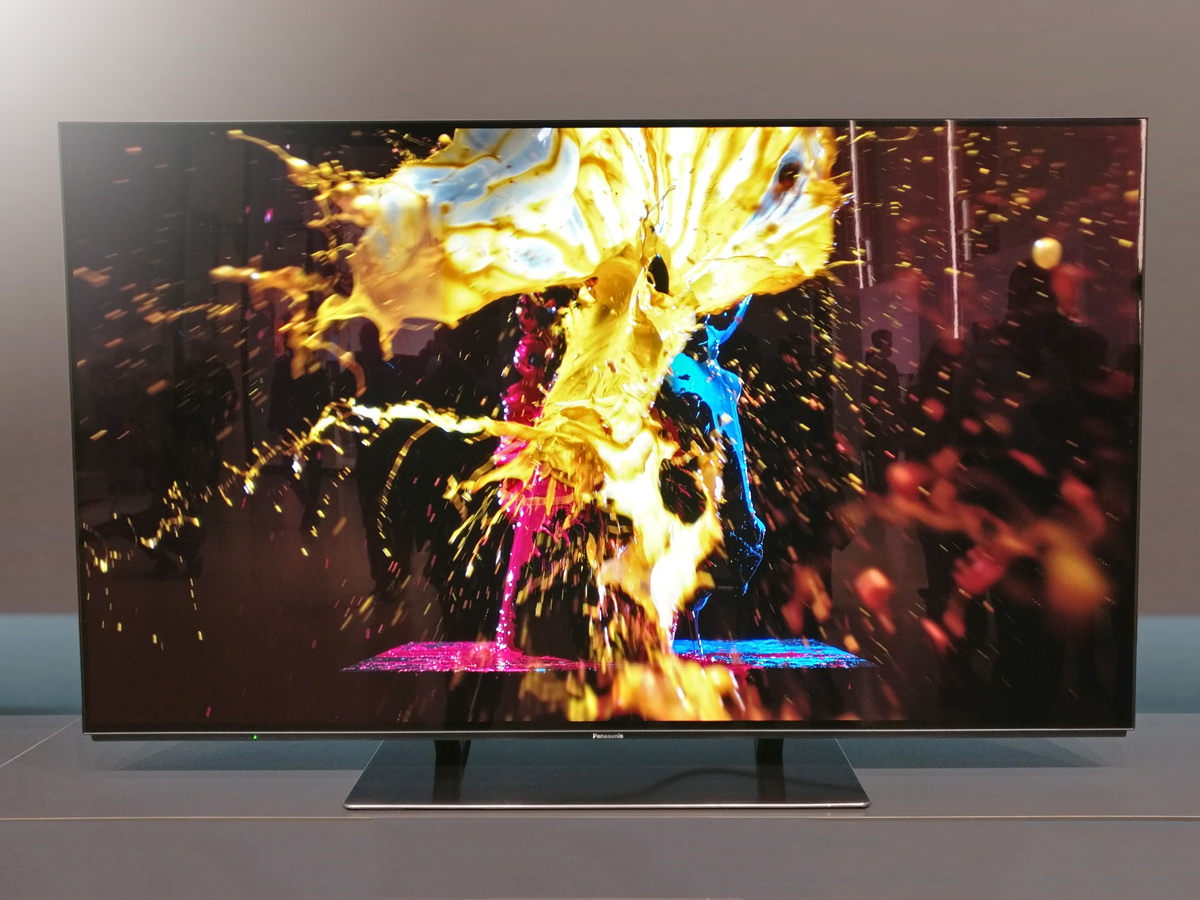
As good as the EZ1002 is, it’ll surely be expensive, too. For the middle ground, your best bet is the EZ952 – a 4K OLED screen carrying most of those ‘Pro’ features, but packing less of a blow to your bank account.
Equipped with that same HCX2 colour processor, as well as compatibility with both HDR10 and HLG (but, again, no Dolby Vision), the biggest loss is the black filter found on the EZ1002. Still, Panasonic was at pains to emphasise the work it’s put into mastering control of near-black colours, to achieve a smooth hue gradient, even with the murkiest non-black shades.
As with the EZ1002, Panasonic has applied for both THX and Ultra HD Premium certification for the EZ952 and, in person, it’s easy to see why: it’s both surprisingly bright and crystal clear, with predictably rich colours.
The box itself is nowhere close to being as jaw-dropping as LG’s Signature W sliver of screen, but build quality remains solid and styling is sharp, if subtle.
The EZ952 also misses out on the EZ1002’s Blade soundbar, although those people with a dedicated sound system might consider that a blessing, and it does get the same OS update and 4K content options. It’s your only option if you want a 55in OLED from Panasonic.
Price: TBC
Sizes: 65in (TX-65EZ952B) and 55in (TX-55EZ952B)
Read more › hands-on with the Panasonic EZ952
EX750

Of course, OLED’s all well and good, but it can be pretty expensive, too. Want some 4K kit without the organic price tag? Try the EX750 for size.
Despite lacking the true blacks of OLED, everything else about this LED set screams ‘pro’: it, too, benefits from that cinematic, HCX2 colour processing which, while not quite as effective here as with the OLEDs, still ensures astounding saturation – particularly for an LED box.
Local dimming helps a lot, too. It’s a clever bit of tech that times the backlight with the LED shutters to achieve much better dark levels. It still pales in comparison to an OLED’s contrast ratio, but means a more balanced picture generally, while an HDR brightness enhancer means things look great even in bright rooms.
The EX750 also delivers an image processing rate of 2400Hz, which should ensure judder- and lag-free images, while it also offers support for 4K in both HDR10 and HLG.
In terms of design, the EX750 takes a pared-back approach, with slim bezels and a silver finish that would look good on any wall. The 50in and 58in versions ship with a clever swivel and lift stand that makes adjustment a cinch, too, while the 65in iteration is swivel-only and, because of its sheer size, the 75in has a fixed base.
Price: TBC
Sizes: 75in (TX-75EX750B), 65in (TX-65EX750B), 58in (TX-58EX750B) and 50in (TX-50EX750B)
Read more › hands-on with the Panasonic EX750
EX700
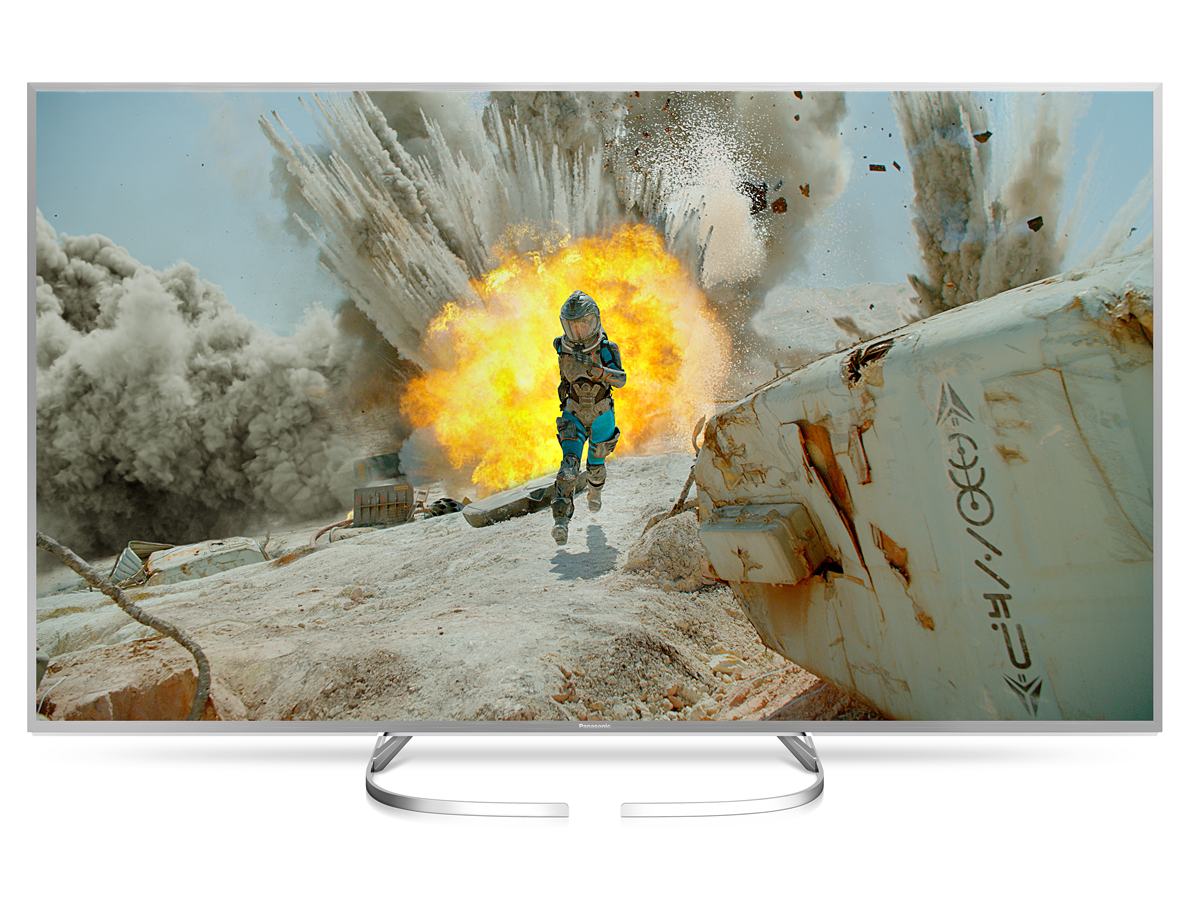
From here onwards it’s a case of Panasonic tweaking specs down to build a full range. The EX700 is in many ways similar to the EX750, being a 4K LED box with support for HDR10 and HLG – but things are toned down in several areas.
While there’s a wide colour gamut, you won’t find that HCX2 colour processor here, and image processing happens at a lower 1600Hz.
That said, the EX700 still delivers local dimming, decent brightness and broad 4K content support in a more stylish shell than that of the EX600 – and one that benefits from Panasonic’s clever ‘Switch’ stand system, which allows you to change the base to fit the space on offer.
Price: TBC
Sizes: 65in (TX-65EX700B), 58in (TX-58EX700B), 50in (TX-50EX700B), 40in (TX-40EX700B)
EX600
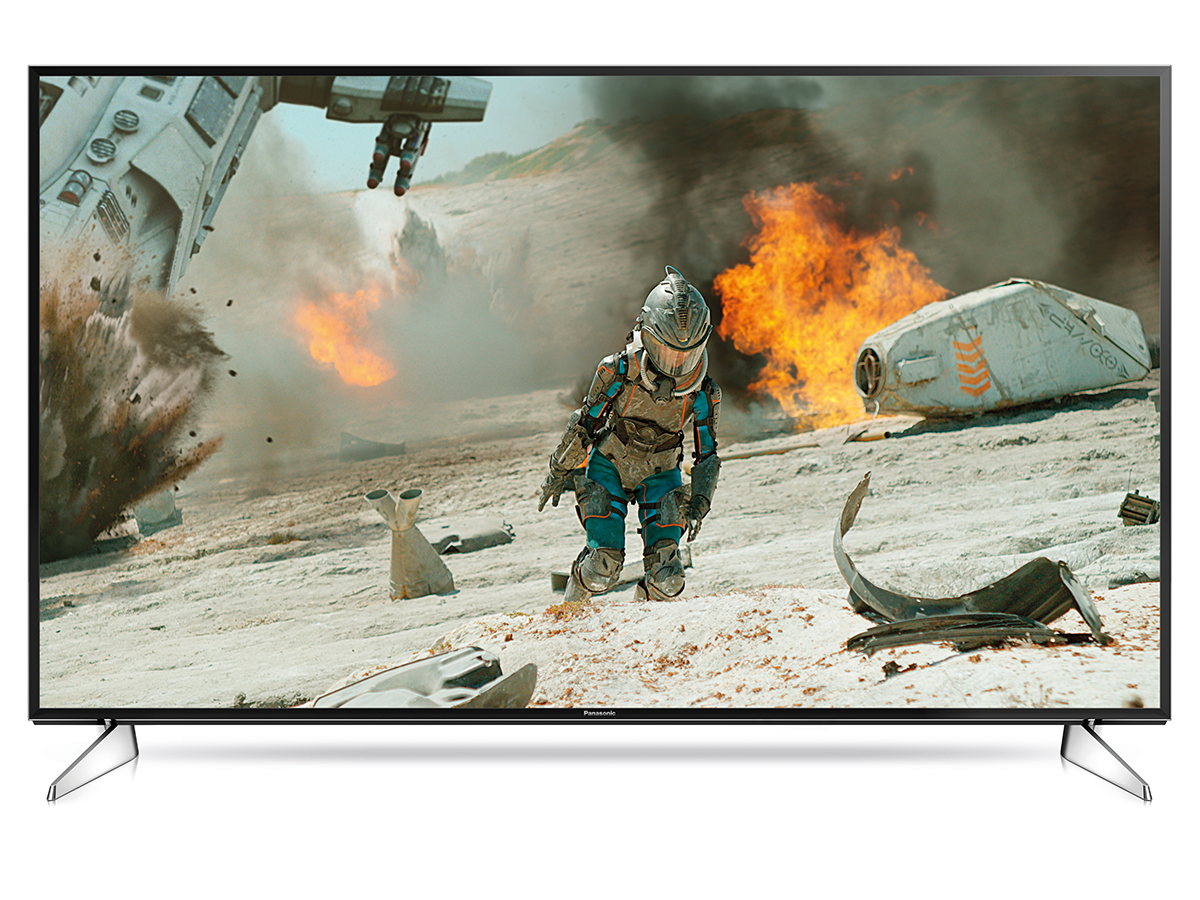
At the lowest end of Panasonic’s 4K range is the EX600, a 4K LED machine that takes the EX700 and slices away local dimming and wide colour gamut support.
It’s no slouch, mind: it’ll do HDR10 and HLG like the rest of the range and, while lower than on the others, 1300Hz processing is hardly shabby.
Stylish in a subtle way, it’s got that same useful Switch stand design as the EX700 and it’s the only 4K model available in a 40in display size.
Price: TBC
Sizes: 65in, 55in, 49in and 40in
Sharing is caring
Thought the line-up looked close enough already? How’s this for sharing: all of Panasonic’s 2017 4K models are HDR compatible, all have the new 4K gaming mode (which virtually halves input lag on OLED TVs) and all support USB hard drive recording.
What’s more, every set carries the My Home Screen 2.0 upgrade, which brings a similar graphical interface to previous versions, albeit with the option to create app folders. There’s also an easier device browser, the option to change gamma levels on HDR content and 4K content from Amazon, Netflix and YouTube – including the incoming 4K HDR app.
There’s also a Freeview Play upgrade to be found across the range,which delivers a Virgin V6-rivalling content search option.
For shortcut lovers, all new Panasonic tellies will ship with an updated remote that features a ‘My App’ button that can be customised to act as a zippy one-press way to open your favourite apps.
Running a 2016 Panasonic LED box? All of these will receive support for HLG via a software update in the near future, too.

